Varicose veins — it is not only an aesthetic problem. This is a serious threat to the health and even lives. When the first symptoms of the disease, you should consult a doctor and begin the treatment.
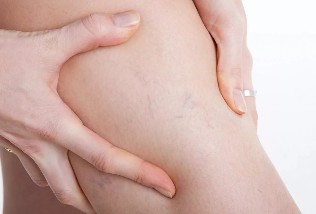
Let's see, what are the methods of treatment medicine has to offer.
The modern approach to the treatment of varicose veins
It is difficult to underestimate the prevalence of this pathology is, because, according to statistics from the vulnerability affects close to 75% of women and 60% men. And this is only among the inhabitants of the developed countries. To explain the meanings of the cause of the appearance of varicose veins, you should have an idea about the structure of the veins of the lower extremities. The venous blood in the interior of our feet without rest moves upwards, overcoming the laws of gravity, to the application of this process, veins have special valves that prevent the liquid from falling down in the middle of the jostling of heart. The violation of work of this mechanism causes the return current of venous blood, and because of the greater amount veins dilate, reducing their tone.
The first stage of varicose veins is usually carried out without special symptoms, accompanied by a less than insignificant discomfort in the area of the feet and the "weight" to the hour of the evening. It can be noted that the legs get tired, even after small walks. In the second, sub-compensation, the phase of these signals is amplified, and were also observed to plaintive laments of pain, swelling, tingling sensation in legs, cramps.
The third, of the compensation, the stage is characterized by the irreversible changes of the skin of pimples:
- the edema, which does not go down even after sleeping;
- the hyperpigmentation;
- indurate — acting together of the skin.
When the epidermis becomes easily vulnerable, it is possible to varicose eczema and, as the end of the trophic violations of the plague. The contempt of the pathology is also face complications such as thrombophlebitis and thromboembolism.
As soon as possible earlier treatment begins, the more encouraging the outcome. But after the success is necessary to an adjustment of lifestyle, leaving you time to preventive procedures.
The suspect in the varicose veins should be a time for the early visit of the doctor, which will help you to identify the disease and determine its state.
The diagnosis is the first step toward recovery
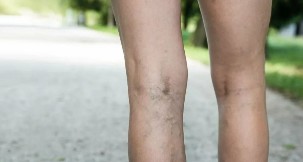
First of all, the specialist of the consultation the patient is necessary for the collection of the clinical history. Then follows the standard of inspection and palpation of the affected disease areas. For more detailed and accurate diagnosis using duplex ultrasound of angio-scan with the mapping of the blood flow. The procedure is a simple ultrasound — with the only difference being that in addition to the two dimensions of the image, the doctor sees the speed and direction of movement in the mapping of blood flow in the vessels. Modern ultrasound devices allow you to identify broken valves, the parts of the veins with a direction of circulation of the blood, exactly mark its projection on the skin.
After a diagnosis is updated, it is time to begin to take steps to get rid of varicose veins.
Conservative treatment of varicose veins
With the help of surgical techniques can prevent, halt, or facilitate the course of the disease. As the main method of treatment is used only in case that the operation is not possible.
Conservative following techniques:
- Compression therapy, that is to say, the special use of a compression of the inner clothing or bandages. Its effects are close to vienna, thus facilitating the work of the valve and improving blood flow. The effectiveness of compression therapy is shown in many studies. There are No contraindications between them, atherosclerosis, aortoarteritis, inflammatory diseases of the skin and other.
- The medical therapy involves the use of drugs for oral administration and topical (in the form of ointments). To the groups of drugs for the treatment of varicose veins of the veins are venotonic and anti-inflammatory medications, anticoagulants (blood thinners). Medication the doctor individually. It is important to remember that each one has its contraindications. For example, the majority of preformed venotonic not be taken in the beginning of pregnancy and lactation. And when you are receiving treatment with anticoagulants should be systematic testing of the coagulation of the blood.
As the main treatment in the absence of any kind of obstacles and contraindications are prescribe one of the options of surgical treatment.
Traditional operation (venectomy)
It is now used only in certain cases related to the special structure of the veins or difficult the course of the disease, for example, to the different forms of thrombophlebitis acute.
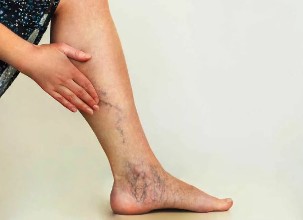
The operation consists in the ligation of the river mouth area of the trunk affected the great saphenous vein in the deep system (crossectomy) and then the mechanical removal of the same trunk. The manipulation is performed under general anesthesia or with the use of spinal anesthesia and has a duration of 1-2 hours. In relation with the high frequency of postoperative complications — bruising in the places of disposal of a cannon over the pain syndrome, neuralgia, and paraesthesia (numbness) in the last time the traditional surgical intervention yields to the current methods. They are referred to the endo-venous coagulation by laser.
After the operation is recommended to regulate the motor activity without large loads, along one of a month and a half shows compression of the therapy.
In addition to this method of treatment, and there are other, more "conservative" ways to get rid of varicose veins in the legs.
Minimally invasive methods
There are several types of less traumatic methods of treatment of varicose veins. From the data of the patient and the characteristics of the disease doctor will make a decision on the desirability of one of the procedures.
Endo-venous coagulation laser
The operation of endo-venous laser coagulation became the method of treatment of varicose disease of any severity. Neither the severity of the venous insufficiency, or the thickness of the lumen of venous trunk in the present, there are limitations to endo-venous laser coagulation. This has been possible thanks to the use of the following tools:
- two-wave lasers with an absorbing wavelength for hemoglobin, and the second — vascular wall;
- radial fiber, which provides processing of the circumference of the internal surface of vienna;
- automatic pump, which allows the pumping of the solution of anesthetic around vienna, providing pain relief, the reduction of the diameter of the vein, the protection of the adjacent tissues.
Special preparation of endo-venous laser coagulation is not required. Before the operation is subject to the duplex ultrasound analysis. It is also required the donation of blood in the standard preoperative set of analyses: general, biochemistry, coagulogram.
During the procedure, the doctor will puncture affected of vienna, after which enter a thin (1 mm thick) of a catheter with a conduit of light. Throughout this process, as well as the position of the optical fiber in vienna, and the subsequent "beer brewing" vienna is controlled intraoperative TIES-of the machine. The operation lasts approximately 40 minutes and requires only local anesthesia.
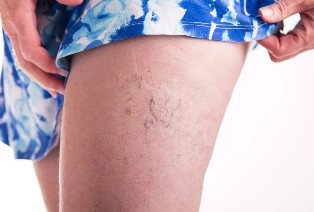
After the operation stay in the hospital is not necessary, the patient must wear the compression garment for 3 to 5 days, and in a couple of weeks recommend daily walks.
Radiofrequency ablation
The operation is, in its essence is similar to laser coagulation. With the only difference being that in the wall of the vein to "close" and then the resorption affecting the radio frequencies of the radiation. Specialized training, in addition to the standard preoperative, is not necessary.
At present, in connection with the improvement of the laser systems no advantage before endo-venous laser coagulation or radiofrequency ablation does not have. However, the procedure is more costly in relation to the higher price of the probe.
The operation cannot be performed during pregnancy and lactation, atherosclerosis of the arteries of the lower extremities and of the impossibility of monitoring the motor activity.
The possible complications and the complex of measures of reinstatement in the period of rehabilitation are similar to the previous procedure.
Mini-phlebectomy
The principle of operation consists in the removal of the entries and nodes of vienna through punctures or cuts in the skin with the help of special tools. Used when independent varicose veins in the tributaries or as an additional procedure after the laser coagulation, radiofrequency ablation or surgery phlebectomy.
The preparation is similar to the previous one, the standard procedures of a set of analysis, as well as the ultrasound scan of the veins. Contraindications — pregnancy and lactation, infectious diseases, thrombophlebitis, violation of the motor activity, the pathology is the coagulation of the blood.
The duration of the mini-phlebectomy is 20 to 40 minutes, in the period of rehabilitation should be wearing compression stockings.
Sclerotherapy
Non-surgical methodology for the treatment of varicose veins is suitable for both spider and varicose veins, and an aesthetic purpose — for the destruction of the cardiovascular diseases "asterisks" and "veins".
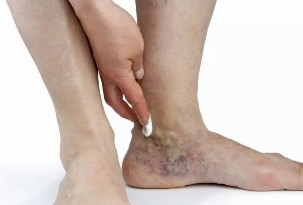
Contraindications serve the thrombophlebitis, allergic reactions, infections, pregnancy and lactation, the inability to make the injection.
Sclerotherapy of the consists in the introduction into a vein through a piercing special of the substance, which "binds" the wall of the vessel, which subsequently produced its reabsorption. One of the latest innovations in the method of foam-foam, which involves the use of foam in the form of the drug. Therefore, it is to a lesser extent, washing of the blood, which makes it possible to decrease the concentration and quantity of the substance to the increase of the efficiency. Transplant surgery is done without anesthesia, as well as for the puncture is so thin insulin needle.
The side effects of the sclerotherapy can be attributed to the pigmentation, which appears during sklerozirovanie of vienna. In some cases, it is possible to incomplete agglutination of vienna, which will require the compliance of repetitive procedures.
After sclerotherapy is it necessary to wear compression garment, as well as to avoid exercise a physical and high temperatures (for example, the use of the sauna).
The price of sclerotherapy depends on the execution of a volume. For the removal of large trunks not sclerotherapy now practically is not used. And the session of sclerotherapy small knots or venous mesh will have a cost of 7000 to 20 000 rubles.
With the development of medicine and struggle with varicose veins in the legs has gone from the category "war of a hundred years" in the category of "quick wins". Complex surgical techniques have given way to minimally invasive procedures more efficiently and safely for. Today varicose veins — this is not a judgment, and only the reason to consult a specialist.























